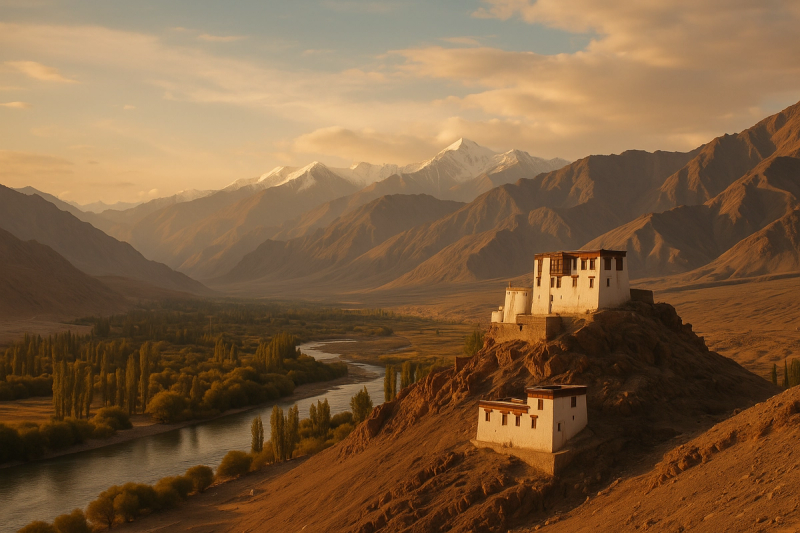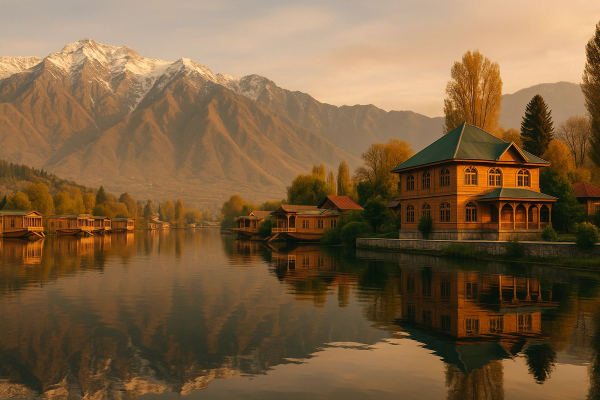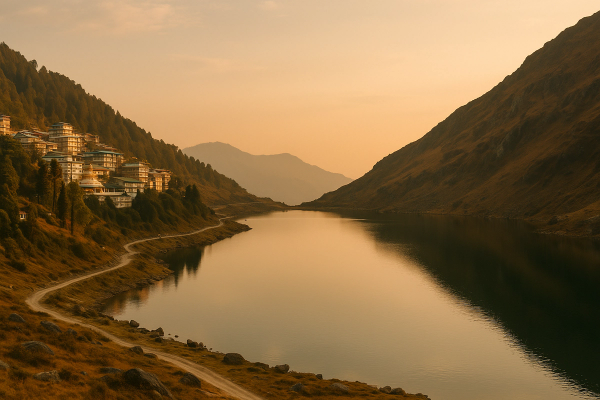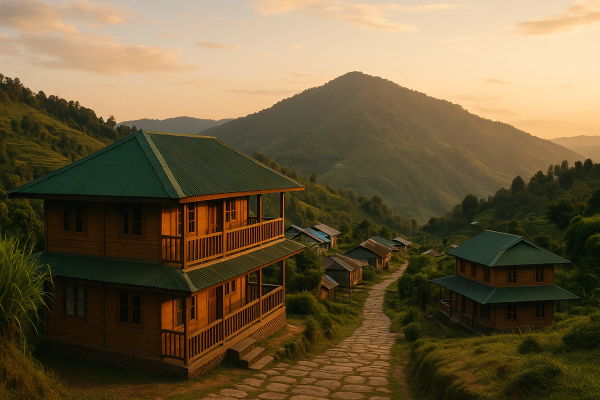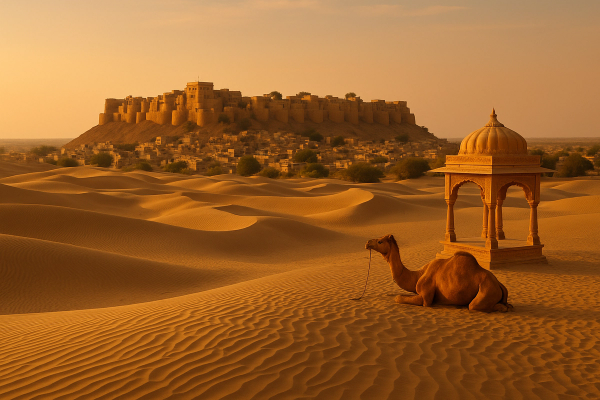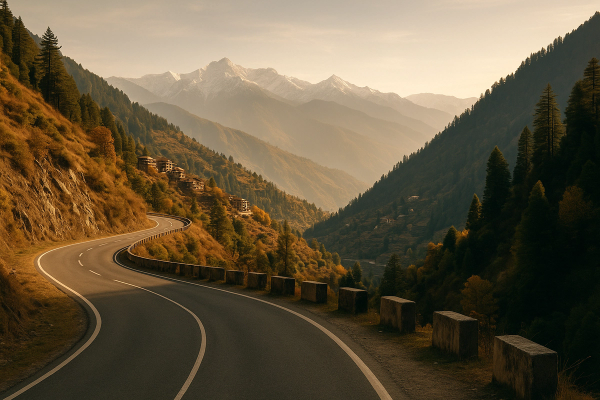Respectful Travel in the Himalayas: Kashmir to Ladakh — what actually worked for me#
I did this classic Srinagar–Kargil–Leh route last summer with a backpack that kept exploding at the zips and honestly, it changed the way I travel. Not just the views, which are mad-beautiful obviously, but the people and the quiet rules that locals follow. If you’re going from Kashmir to Ladakh, respectful travel isn’t some cute hashtag. It’s the difference between being just another tourist and being welcomed with that chai that tastes like home, even at 11,000 feet.¶
Why "respect" matters more in the Himalayas#
The mountains don’t care about us, truly, and folks up there live with less water, short summers, long winters, and this deep sense of community. So if we show up loud and wasteful and clicking photos everywhere like it’s a film set... not cool. I messed up a few times myself. Spoke too loudly outside a mosque. Wore shoes into a monastery courtyard without thinking. Got a gentle stare. Lesson hit. After that, I slowed down and just watched how locals do things and tried to copy. You know, like we were taught as kids.¶
- Ask before photos. People, prayer rooms, army posts, even drying apricots in someone’s courtyard — don’t assume it’s okay.
- Dress modest in Kashmir’s old city and in monasteries across Ladakh. Shoulders, knees, headscarf if you’re entering a shrine.
Seasons and routes — pick your window, or the road picks you#
Srinagar–Leh highway via Zojila usually opens around late April or May and runs till Oct/Nov, totally weather dependent. Manali–Leh opens later, around June to Oct. Snow, landslides, surprise closures — the BRO updates and local admin pages are your best friends. If you’re trying to squeeze it in shoulder months, have a buffer day. I got held up in Sonamarg once because the pass was shut till noon and honestly, it was worth waiting rather than pushing it in bad weather. Summer crowds are real, autumn colours in Kashmir are magic, winter is beautiful but brutal unless you’re ready for it.¶
Getting around, permits, SIMs, the boring-but-important stuff#
There’s no Uber/Ola. In Srinagar, shared cabs and autos are easy. Houseboat guys also have their own shikaras, negotiate politely. For Ladakh, outside taxis (from Srinagar/Manali) aren’t allowed for local sightseeing — you’ll have to hire a Ladakh taxi for Nubra, Pangong, etc. Rates are union-fixed, not cheap, but drivers are usually awesome and safe. Bike rentals in Leh are around 1500–2500 a day for a 350–500 cc, check brakes and mirrors, carry a spare clutch cable. For permits: Indian citizens don’t need an Inner Line Permit for most popular parts of Ladakh now, but you do need to pay the environment/green fee and wildlife fee in Leh — I paid it online and carried a print. Foreign nationals still need PAP through a registered agent. Certain border zones like Hanle/Umling La open and shut based on the situation. As of 2025, only postpaid mobile numbers work in J&K and Ladakh, and network outside city areas is patchy. Jio and BSNL did the best for me. UPI works widely in Srinagar and Leh, but for Nubra and Pangong carry cash. ATMs can run dry on long weekends.¶
Srinagar: houseboats, old-city adab, and tiny things that matter#
I picked Nigeen over Dal for a quieter houseboat vibe. Early morning shikara for kahwa and those lotus stem chips felt straight out of a postcard, except your toes get cold and the boatman tells you about his kids, which is real life. If you visit Hazratbal or Jamia Masjid, dress modest, ask before photos, don’t block pathways. Gulmarg and Pahalgam are crowded in peak season — go early morning. The Tulip Garden usually pops late March–early April for a few weeks and it’s madness but beautiful. For a calmer day, Yousmarg or Doodhpathri. Shikara rides were 700–1200 an hour depending on how badly I bargained. Keep it fair, yaar — a few hundred bucks to you vs someone’s day’s earnings.¶
Kargil and Dras: the quiet heart on this route#
We broke the journey at Kargil and it was the best choice. Clean guesthouses, quiet evenings by the Suru River, apricot everything in season. Do stop at the Dras War Memorial — it’s dignified, humbling. I kept my phone away there. Rooms in Kargil ranged from 1500 for basic to 4000 for comfy boutique stays. Food is hearty — try qahwa, kebabs, and local bread right out of a tandoor. Night drives are not a flex on these roads, reach before dark if you can.¶
Ladakh: acclimatise, then wander slow#
Leh is 11,500 ft-ish and your lungs will tell you immediately. First day, chill. Short walks, no runs up staircases. Hydrate like a cactus who found a tap. Once you’re good, start with the lower-altitude western circuit — Alchi, Likir, Basgo — before Nubra or Pangong. Hemis Festival tends to happen around June/July and it’s colourful and busy. The Ladakh Marathon in September is a big deal now. Stargazing is next level — Hanle is India’s first Dark Sky Reserve and if it’s open when you go, it’s worth planning for, but please don’t blast music or headlights. Silence is part of the show.¶
Where I stayed and what it cost me#
Leh has new-age hostels with clean dorms at 600–1200 a bed. Cute guesthouses and homestays are 1800–3500 for a double including breakfast. Boutique stays go 5–12k. Nubra and Pangong camps vary a lot — 2500–6000 depending on view and bathroom type. Personally, homestays were my fav. You get home food, compost toilets that you’ll learn to appreciate, and stories. Just remember water is precious. 5-minute showers, maybe every other day. It’s fine, you won’t melt.¶
Food I loved, and a few table manners I picked up#
Kashmir: wazwan is an experience — rogan josh, gushtaba, rista, yakhni, haak saag, nadru chips, girda and sheermal. Vegetarians don’t worry, there’s tons, even if the menus look meaty. Kehwa is addictive. In Ladakh, thukpa, skyu, momos, tingmo with spicy chutney, churpe if you’re curious, and sea buckthorn juice which tastes like a sunny day. Don’t waste food, finish what’s on your plate. In homestays, help clear stuff if they let you. Small things that are actually big.¶
Quieter corners that felt honest#
If crowds get to you, try Doodhpathri or Yousmarg in Kashmir instead of the usual circuit. If you have time and relevant permissions, Gurez and Tulail are stunning but remote — check current rules. On the Ladakh side, Alchi’s murals are ancient and mindblowing, Basgo at sunset is all gold and silence, Turtuk feels like a slice of Baltistan with apricot-lined lanes, and Panamik’s hot springs on a cold morning are... chef’s kiss. Tso Moriri is calmer than Pangong, though the road is rough — leave early and drive respectfully, wildlife crosses here.¶
Costs and safety, straight up#
Daily spend really depends on your ride and stay choices. A frugal day in Leh with dorm bed, cafe meals, local buses or shared taxis — 1500–2500. Moving day with a dedicated taxi to Nubra or Pangong — 9–15k for the vehicle, share with others if you can. Bikes 1500–2500 per day, fuel is expensive and sparse — top up at Leh/Karu and Diskit. Shikariya in Srinagar we already spoke about. Safety-wise, situations can change, so keep an eye on local news and admin advisories. There’s visible security in Kashmir, and I felt fine sticking to tourist areas and travelling in the day. In the mountains, the biggest risk is roads and altitude, not people. Seatbelts. No late-night hill racing. If you feel dizzy or nauseous, descend or rest. No bravado, bro.¶
Leave-no-trace rules I actually followed (and messed up once)#
- Carry a bottle and refill — lots of cafes and hotels do free RO refills now. Plastic bottles are the worst up there.
- Pack it in, pack it out. If a bin isn’t around, your backpack is the bin till you find one.
- Stay on marked trails. Shortcuts kill fragile plants and cause erosion.
- Keep music and drones down. Many monasteries and villages don’t allow drones anyway.
What I’d change next time, and a tiny request#
I’d spend an extra night in Kargil to explore Suru Valley properly, and I’d choose homestays over camps near Pangong because the waste footprint hit me later. I’d also learn a few more Ladakhi phrases instead of just julley and thukje che, even though those two go a long way. If you’re heading up soon, go soft, go slow, tip fairly, and leave places the way you’d want your own galli left. If you want more routes, food finds, and honest, non-clickbaity stuff, I keep bookmarking pieces on AllBlogs.in — it’s actually useful when you’re planning and not just daydreaming.¶

